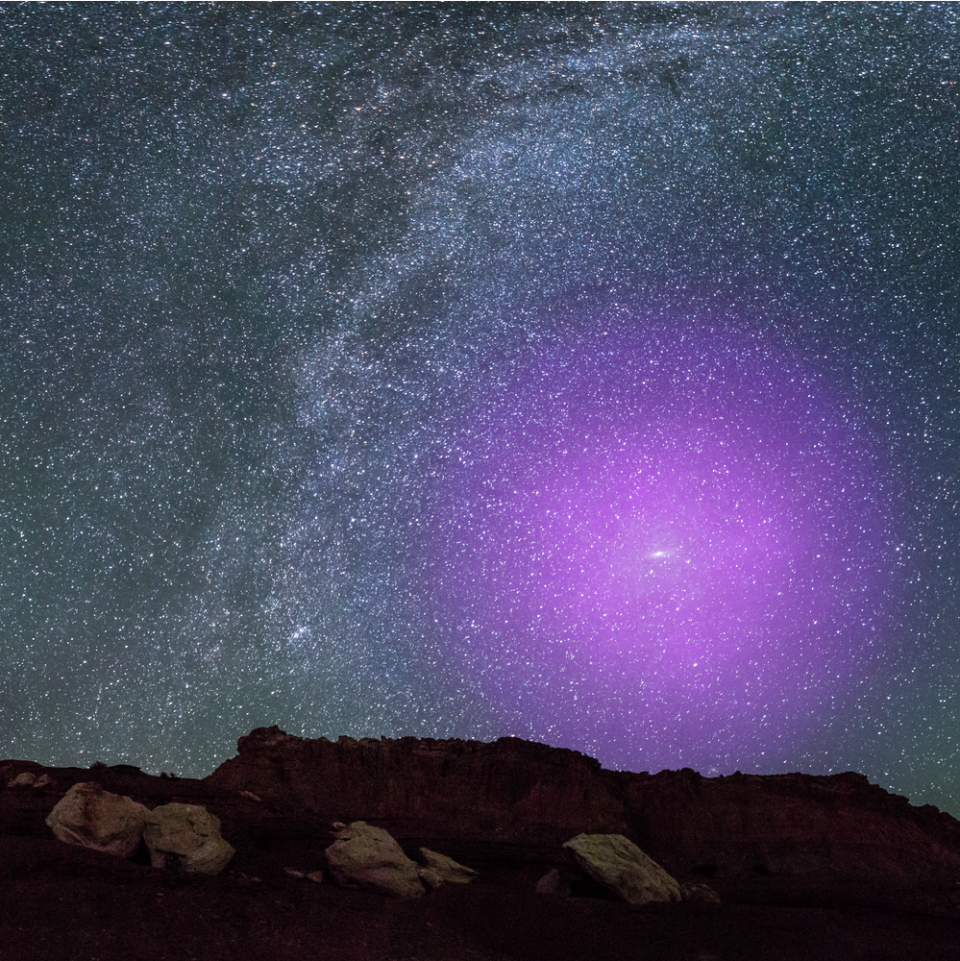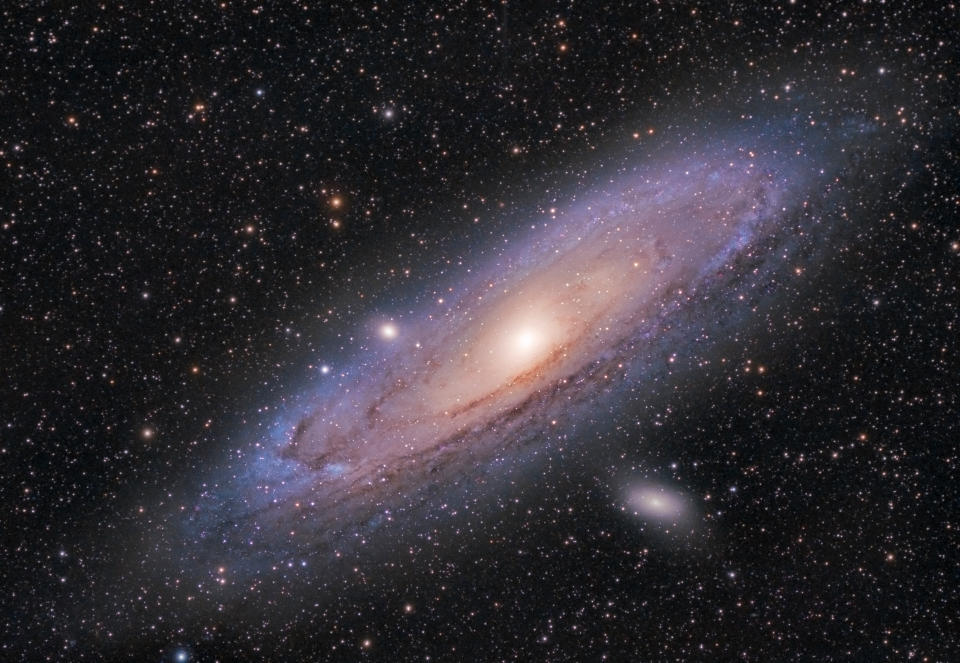'Halo' surrounding next-door Andromeda galaxy 'extends halfway to ours'

Our neighbouring galaxy, Andromeda, is surrounded by a vast and nearly invisible “halo” of plasma which extends 1.3 million years towards our own Milky Way galaxy.
Researchers using the Hubble Space Telescope mapped the mysterious halo, and found that the halo is almost touching the halo of our own galaxy.
In about 4.5 billion years, the two galaxies are predicted to collide head-on and form one galaxy, known as Milkdromeda.
The Andromeda galaxy, also known as M31, is a huge spiral of perhaps as many as one trillion stars, similar in size to our Milky Way.
Read more: Astronomers find closest black hole to Earth
At a distance of 2.5 million light-years, it is so close that the galaxy appears as a cigar-shaped smudge of light high in the autumn sky.
They also found that the halo has a layered structure, with two main nested and distinct shells of gas. This is the most comprehensive study of a halo surrounding a galaxy.
Co-investigator Samantha Berek, of Yale University, said: “Understanding the huge halos of gas surrounding galaxies is immensely important.

“This reservoir of gas contains fuel for future star formation within the galaxy, as well as outflows from events such as supernovae. It’s full of clues regarding the past and future evolution of the galaxy, and we’re finally able to study it in great detail in our closest galactic neighbour.”
Read more: There might once have been life on the moon
The researchers found that the “inner” part of the galaxy’s halo is very different from the outer parts – contaminated by elements from exploding stars.
Heavier elements are cooked up in the interiors of stars and then ejected into space, sometimes violently as a star dies.
The halo is then contaminated with this material from stellar explosions.
Nicolas Lehner, of the University of Notre Dame, said: “We find the inner shell that extends to about a half million light-years is far more complex and dynamic.
“The outer shell is smoother and hotter. This difference is a likely result from the impact of supernova activity in the galaxy’s disk more directly affecting the inner halo.”
Read more: Exoplanet twice the size of Earth ‘could be habitable’
Through a program called Project AMIGA (Absorption Map of Ionized Gas in Andromeda), the study examined the light from 43 quasars (the very distant, brilliant cores of active galaxies powered by black holes) located far beyond Andromeda.
The quasars are scattered behind the halo, allowing scientists to probe multiple regions.
Looking through the halo at the quasars’ light, the team observed how this light is absorbed by the Andromeda halo and how that absorption changes in different regions.
If its gaseous halo could be viewed with the naked eye, it would be about three times the width of the Big Dipper.
This would easily be the biggest feature on the nighttime sky.

 Yahoo Sports
Yahoo Sports 
